The anaerobic chamber, along with glove boxes, has been around for more than half a century and have been instrumental in numerous technological breakthroughs, particularly in pharmaceutical sciences and energy producing studies.
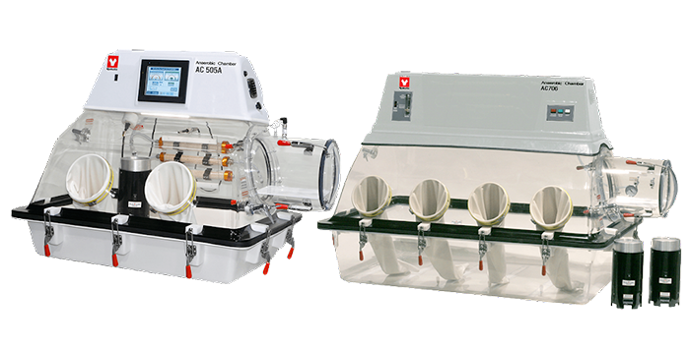
While studying micro biomes in natural conditions is ideal, chambers have provided scientific opportunities for advanced biological research and culture within the lab.
Anaerobic chambers provide a controlled-environment for lab scientists to study such oxygen-sensitive samples under low oxygen conditions. Through a catalyst such as a rare earth metal, palladium, you can lower oxygen concentrations to about 0-5ppm, depending on the model, through chemical reaction. Thereby, mimicking the physiological conditions required for any specific biological samples.
Even with airtight and temperature-controlled conditions, the right type of anaerobic chamber will allow operators to easily introduce some chemical reagents, and additional bacterial samples as well as other media into the chamber.
Applications of Anaerobic Chamber in Numerous Industries
Anaerobic chambers are generally for assessing and studying oxygen sensitive biomaterials within a low oxygen environment. These are used in numerous scientific and technological applications including microbiology research, biochemistry, clinical microbiology, human microbiome research, cell culture, and biofuel production.
The following examples are some notable applications of anaerobic chambers.
In food microbiology research, scientists can study anaerobic bacteria and cultivate them in an oxygen-free setting. By isolating and incubating these anaerobes, they can allow the evolution of bacterial culture and even tell which microbial families can cause infections such as gas gangrene, intoxication, and mixed infections.


In animal science studies, anaerobic chambers help with regulating nitrous oxide emissions from manure storage systems. With regulations against contaminant release and nitrification set by the Environment Protection Agency (EPA), research ensures the control of gas emission and contamination from and within animal farms and water treatment facilities.
In numerous industrial applications, anaerobic chambers are also used for fermentation (AF); a process that is instrumental for treating organic waste materials and biofuel production.
AF yields numerous benefits such as reduction of greenhouse gas emission, improvement of fertilization efficiency, lessening of pathogens through sanitation, and production of renewable energy.
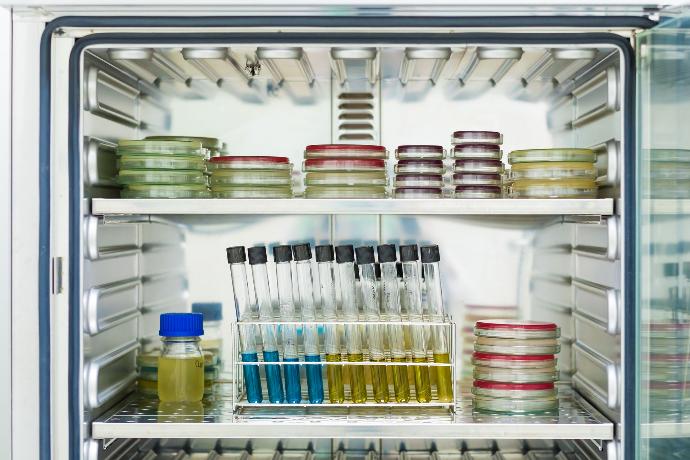
With numerous applications such as the above-mentioned, anaerobic chambers have helped in developing industries for more than half a century.
Standard Features and Examples
The right anaerobic chamber must have all design requirements and specifications necessary for working with oxygen-sensitive biomaterial.
While all units have the basic components such as a catalyst, catalyst fan box, gas, and airlock to provide the conditions required for study and culture, most anaerobic chambers vary in sizes, design configurations, accessories, and options. This variety allows users to customize the anaerobic chamber depending on their needs and application.
For more than a single pair of hands to do the work, a multiple operator chamber would be ideal, such as Yamato’s AC706 and AC716 anaerobic chambers that enable two operators to work simultaneously with samples within the same controlled-environment.
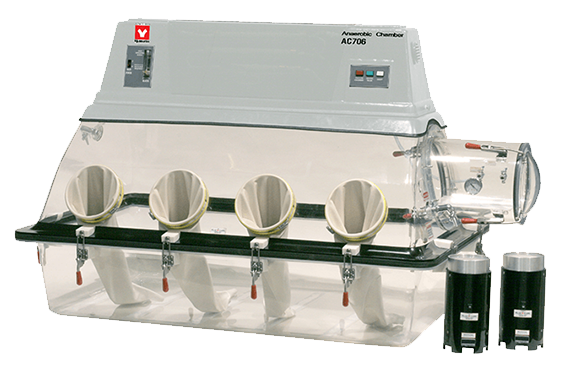
However, when only a single operator is required, anaerobic chambers like Yamato’s AC505A (auto-purge) and AC505 (manual purge) are suitable.
Whether you are right-hand or left-hand dominant, chamber models with ambidextrous gloves provide good work ergonomics and flexibility.
Working with wet biological material would be a mess and the sample would be compromised as moisture could increase bacterial proliferation. Therefore, make sure that chambers come with vacuum pressure pumps with 3 or 6 canisters made from clear plastic or polycarbonate filled with molecular sieve. These components guarantee moisture control and absorption, which are essential for preserving the biological material.
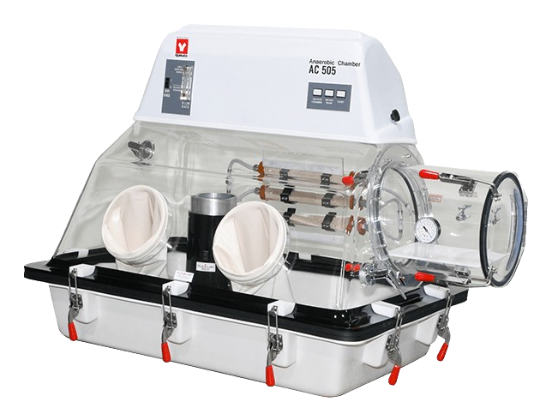
For automation, choosing a chamber with one-touch features, such as Yamato’s AC505A and AC515A, could guarantee accuracy in readings and data collection. Such automation initiates the purging sequence with the touch of a single button, thus automatically creating the desired anaerobic conditions without much of a hassle.
These typically come with a large touchscreen display that conveniently shows atmospheric oxygen conditions in real-time.
Meanwhile, for long-term research, USB ports expediently provide connection for external storage units such as memory sticks or external hard drives, which can be useful in recording 24-hour long data logs.
Built-in oxygen sensors with high and low alarms, as well as alarm history logging capacity, would also record changes in atmospheric oxygen with virtually 100 percent accuracy. This ensures that data collection would be easier than before.
On the other hand, password-enabled chambers are also convenient as these add security features to prevent data manipulation or corruption.
Download the Buying Basics of Anaerobic Chambers Guide here
Why Choose Anaerobic Chambers Over Anaerobic Jars?
Anaerobic jars are not ideal for studying microbiota in low oxygen environments as they are usually prone to air leakage. Furthermore, using glass jars in laboratory operations with a focus on anaerobiosis would eventually be expensive. Likewise, gas jars require high usage volume of incubator space, which would be massively inconvenient.
Unlike anaerobic jars, anaerobic chambers enable the operator to inspect culture plates without disrupting the fixed low oxygen conditions. Interrupting incubation, introducing subculture, and re-incubation would harm bacterial viability, leading to inaccurate readings.
Furthermore, anaerobic workstations, in clinical studies, are found to increase the rate of isolation in anaerobic pathogens. They also provide the earliest perceivable sign of pathological presence in biomaterial.
On a different note, anaerobic workstations are not only cost-efficient, they are also reliable in providing accurate atmospheric control and the appropriate anaerobic conditions required for research and culture.
What to Consider When Choosing the Right Anaerobic Chamber?
The first thing that you should consider when looking for an anaerobic chamber or workstation is the size of the model. Inform the manufacturer about the best dimensions for your required range of capacity in petri dish loading, as well as additional features such as temperature control and illumination system. Some models have a range of capacity from as few as 250 petri dishes to over 1000 petri dishes.
Nevertheless, size requirements are not the only considerations you must take. Also, look at the design layout and available usable space to certify that the anaerobic workstation you are going to choose will have an efficient and controlled atmosphere.
Keep in mind that you should be able to maximize the capacity within the combined incubation and working area of the anaerobic chamber to ensure efficacy in data output.
In addition to the key considerations, make sure that the anaerobic chamber has rapid entry and exit features from within the chamber. This enables the easy transfer of culture plates and samples into a low oxygen concentrated environment right after microbial inoculation. Thus, guaranteeing reduced oxygen exposure in plates and recovery for anaerobic micro biomes throughout the transfer process.
For accurate results and compliance in quality assurance and laboratory standards, make sure that the chamber enables the use of appropriate chemical or biological indicators. Similarly, automated features could expedite the process and provide accurate readings by monitoring essential atmospheric parameters including temperature, humidity, and oxygen concentration within the chamber and in real-time.
Recommendations
Anaerobic chambers come in different make and models. Some are made out of polyvinyl bags while others come in hard solid boxes. Others come in single use while others come in tandem use. And just like glove boxes, these chambers contain the same concentration and combination of 5% carbon dioxide, 10% hydrogen, and 85% nitrogen, with a palladium catalyst to scrub off oxygen within a controlled environment to 0-5ppm.
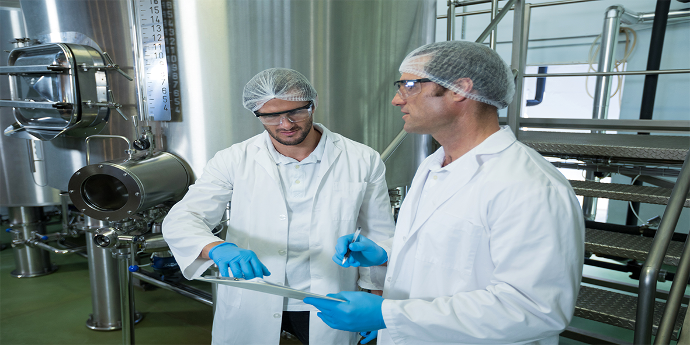
By considering the above-mentioned features and your preferred configurations, you can select from a myriad of model options, which would be suitable for your laboratory and research needs.
Also, consider the solid reputation of Yamato Scientific America, which for over 130 years in the technological industry, has manufactured state-of-the-art technology and provided exemplary services to the scientific community. In addition to the standard models offered, upon request, Yamato is able to customize any of their anaerobic chambers, in terms of size, custom ports, etc.
All products are manufactured in strict compliance with industry quality requirements, as well as international standards. For more information on anaerobic chambers, check out Yamato Scientific America at www.yamato-usa.com or contact us at 1-800-292-6286. Also, reach us through our customer service email: [email protected]